Main switchboard
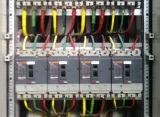 The Main Distribution Board (MSB) is a complete Low Voltage Device (LVD). It contains a set of equipment to provide input, measurement and distribution of electricity. Also, the main switchboard performs the functions of control, management and protection of outgoing electric circuits, distribution or group, both in residential buildings and in public and industrial facilities. Electricity is supplied from the step-down transformer substation to the switchboard inputs.
The Main Distribution Board (MSB) is a complete Low Voltage Device (LVD). It contains a set of equipment to provide input, measurement and distribution of electricity. Also, the main switchboard performs the functions of control, management and protection of outgoing electric circuits, distribution or group, both in residential buildings and in public and industrial facilities. Electricity is supplied from the step-down transformer substation to the switchboard inputs.
The equipment of the main switchboard consists of functional blocks located in several panels, electrically or mechanically connected to each other. Therefore, the purpose of the main switchboard is the introduction, reception and distribution of electricity between the users of the group.
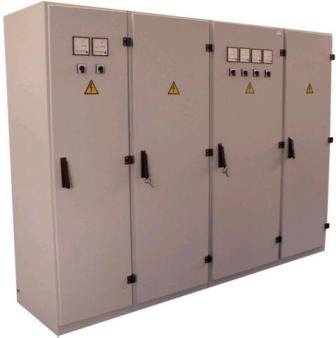
The main switchboard serves to ensure:
-
connection of power lines;
-
supply of electricity consumers;
-
control and restoration of power supply quality;
-
selective protection ie. in the defective blocks;
-
protection against current overloads and short circuits on both input and distribution lines and devices that make up the main switchboard;
-
automatic reserve input (ATS), reactive power compensation units (UKRM);
-
measurement of electricity consumption in alternating current networks (50 Hz, 380/220 V);
The main switchboard has the following power inputs:
- main inputs — from transformer substations (TS)
- backup inputs — from transformer substations, gasoline, diesel or gas generators; sometimes from solar panels and wind generators.
In normal mode, groups of users of the main switchboard are each fed from their input, as a rule, from a transformer substation. However, each group of these consumers can be connected to several backup power inputs on the main switchboard if its own main power supply is switched off. Such connection can be made either manually or automatically through the ATS.
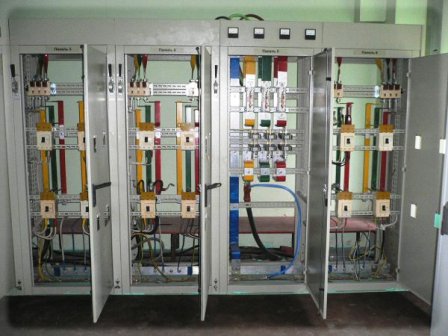
When the power is backed up in the main switchboard, the sections are switched from a non-working input to another working one that may also be under load, this is the so-called split backup input. User groups can also be switched from their own idle input to free backup power.
Main switchboards are available for currents from 600 to 6000 amperes because these low-voltage switchgears are closest to high-power transformers and power sources. Their protective agents provide selective protection against short circuits under these conditions.
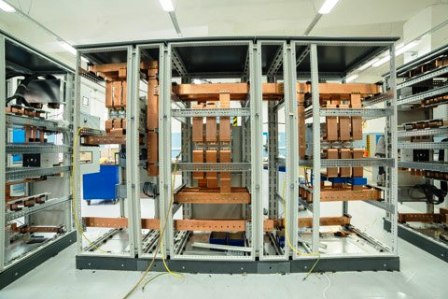
For different rated currents and operating conditions, the main boards have different housing sizes:
- multiples of 450mm, 600mm, 800mm, 1000mm wide;
- in depth multiples of 450 mm, 600 mm, 800 mm, 1000 mm; height 1800 mm, 2000 mm, 2200 mm or 2400 mm.
These dimensions are the most convenient for installation. However, for specific objects, the dimensions may be different. There are single-sided and double-sided mainboards that allow service from one or both sides.
The main switchboards and cabinets are divided into the following five types:
-
Introductory. They contain equipment for introducing, measuring and controlling the quality of electricity;
-
Introduction with ATS. They also contain ATS equipment.
-
Distribution. They contain switchgear and may also contain meters, manual control units, automatic control units and other assemblies and panels for their own needs.
-
Control panels for external power units;
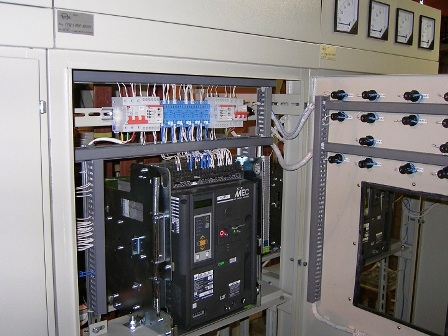
Main switchboard control and monitoring panels, including power quality control equipment, auxiliary and main load equipment, receiving and transmitting (and telemetry) devices, can be physically separated to reduce electromagnetic interference and functionally separated for -easy maintenance.
Busbars are another important functional part of the main board. These are copper conductors with insulators used to distribute and switch currents. In modern main switchboards, the busbars are sometimes made with switching equipment.Such designs allow the main switchboard to be switched from the main bus to the spare so that the structure can be serviced without disconnecting the main switchboard.
